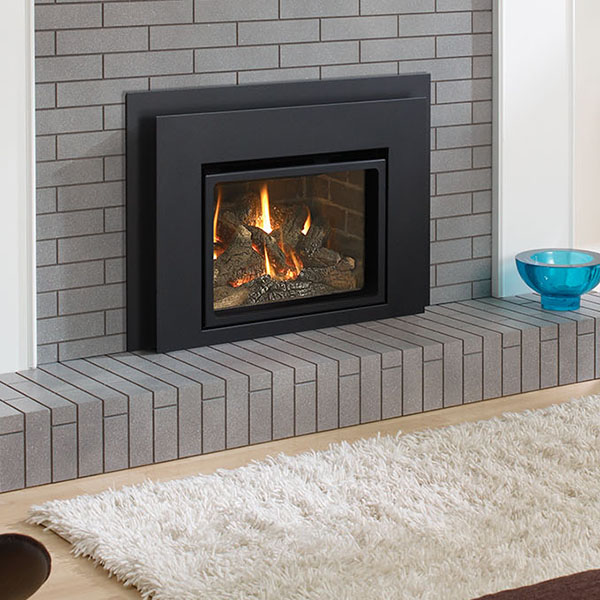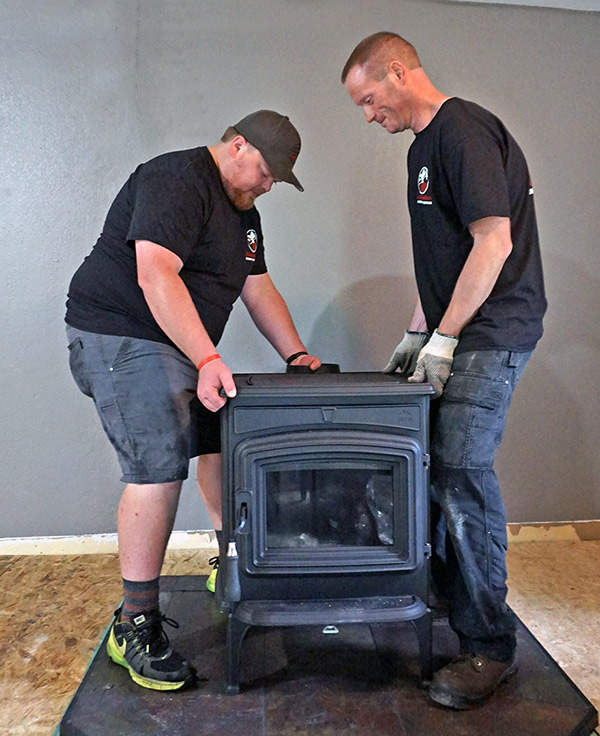If you’re in the market for a new fireplace, heating stove or fireplace insert, you might be tempted to “make it easy on yourself” by purchasing your appliance online. While many top brands with attractive prices are available on websites and e-shopping portals, there are a few things you should think about when deciding whether or not to go this route.
Local retailers of hearth products usually carry or can order any home-heating appliance you find online. But more important – these experts can guide you through the buying process, make sure you end up with the best unit for your needs, and provide professional installation so your appliance runs safely and efficiently. Let’s look at each of these considerations.
 Buying a new fireplace, stove or insert
Buying a new fireplace, stove or insert
As simple as these appliances appear to be when in use, there are many differences from one brand to the next and among the different heat-delivery methods and fuel types. If you’re not well-versed on all these differences, a local hearth pro can help.
The three most popular heating appliances are:
Zero-clearance fireplaces: Run on gas or wood, ZC fireplaces install in a wall within your home and have their own vent system.
Heating stoves: Modern stoves are stand-alone appliances that run on gas or wood and can be installed just about anywhere in the home.
Fireplace inserts: These are gas or wood units that are pre-built to fit into your existing masonry fireplace’s firebox and come with their own vent pipe.
Each type of appliance delivers unique performance levels and has unique requirements for cleaning and maintenance. These are things you should be familiar with before purchasing a new heating unit.
Meeting your heating needs
As noted, every model of home-heating appliance provides specific heat outputs, BTUs and room-size coverages. Modern fireplaces, stoves and inserts all follow strict EPA guidelines for combustion and safety, but there’s more to it than that.
Each appliance is designed to heat a certain-size room. Each unit also has a heat-efficiency rating, which tells you how much of the heat produced will be used as heat for your home. Some models cost less to run than others, and some require more maintenance and cleaning. Your local hearth/fireplace expert can cover all this with you as you shop for the perfect appliance.
 Heating unit installation
Heating unit installation
Installing a new fireplace, stove or fireplace insert is not a DIY project. Only trained, certified installers know all the ins and outs of appliance installation to ensure the unit is set up properly and will run safely.
Many hearth retailers have field divisions staffed with professional installers who know their products well. Fireplace and chimney services companies who don’t have an actual showroom can still consult with you on the ideal appliance for your needs, order it for you and then professionally install it.
If you’re one of those people who would love a new home-heating appliance but aren’t really familiar with all the choices, buying locally instead of through a faceless online portal will bring you the most long-term satisfaction.
Fluesbrothers Chimney & Fireplace of Kansas City, KS, is ready to help you shop for and select the ultimate new zero-clearance fireplace, heating stove or fireplace insert. We’ll make sure your decision is one that will bring you warmth and happiness for years to come. Call us today at (913) 236-7141.
The post Online or Hearth Store: Which Is the Best Place to Buy Your Next Fireplace? appeared first on Fluesbrothers Chimney Service.

 Buying a new fireplace, stove or insert
Buying a new fireplace, stove or insert Heating unit installation
Heating unit installation The weather has finally turned warmer and we are busy grooming the outside of our homes. Most people do not think about their chimney during the summer months, but summer is a critical time to get needed maintenance issues out of the way before cool fall weather arrives.
The weather has finally turned warmer and we are busy grooming the outside of our homes. Most people do not think about their chimney during the summer months, but summer is a critical time to get needed maintenance issues out of the way before cool fall weather arrives.